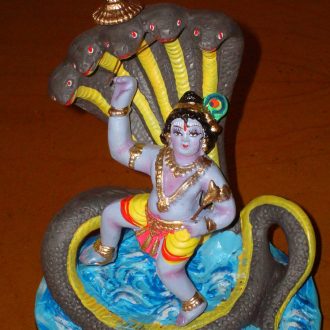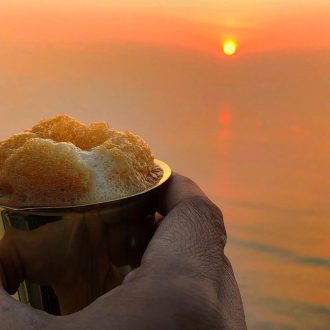Kondapalli- The toy town of Andhra Pradesh
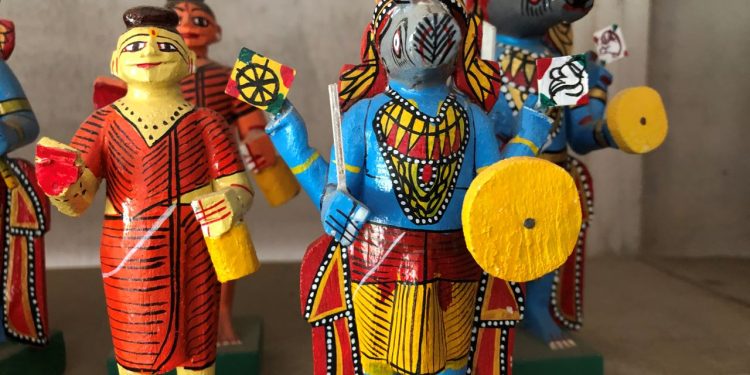
My fascination for the traditional toys of Kondapalli started with a family heirloom – a faded, quaint wooden toy representing the deities, Rama and Sita along with Lakshmana and Hanuman. Painted in shades of teal, green, beige, and red, the miniature was set in a frame and had an old-world charm about it. It was no mere toy – the handcrafted figurine was given to me by my mother who had received it from her grandmother and since then, it had become a permanent fixture in my Navaratri golu – the festive display of gods and goddesses, demons and mortals with stories crafted around them. This eventually led me to start collecting more wooden dolls and toys and that passion took me to the portals of the Kondapalli village, located barely 25 kms from Vijayawada city in Andhra Pradesh.
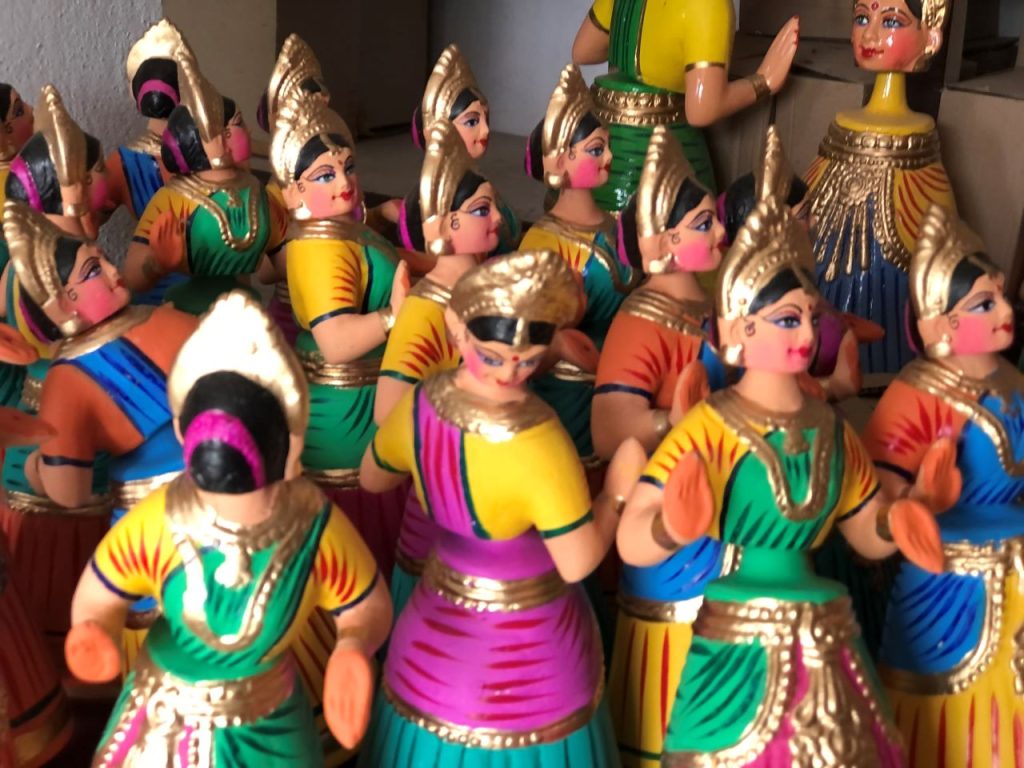

All roads led to the Bommala Kondapalli toys Colony or the Toys Colony of Kondapalli located in the centre of the village, home to about 80 families of artisans, tracing their origins to the patron saint of arts and crafts, Muktharishi, who was blessed by Lord Shiva. Houses, workshops, and shops were huddled together where the toys were carved out of the local softwood referred to as Tella Poniki also called white sander. The traditional toys of Kondapalli are over 400 years old and it is believed that the artisans referred to as Nakarshalu or Aryakhastriyas, migrated from Rajasthan and were later patronized by the local kings.
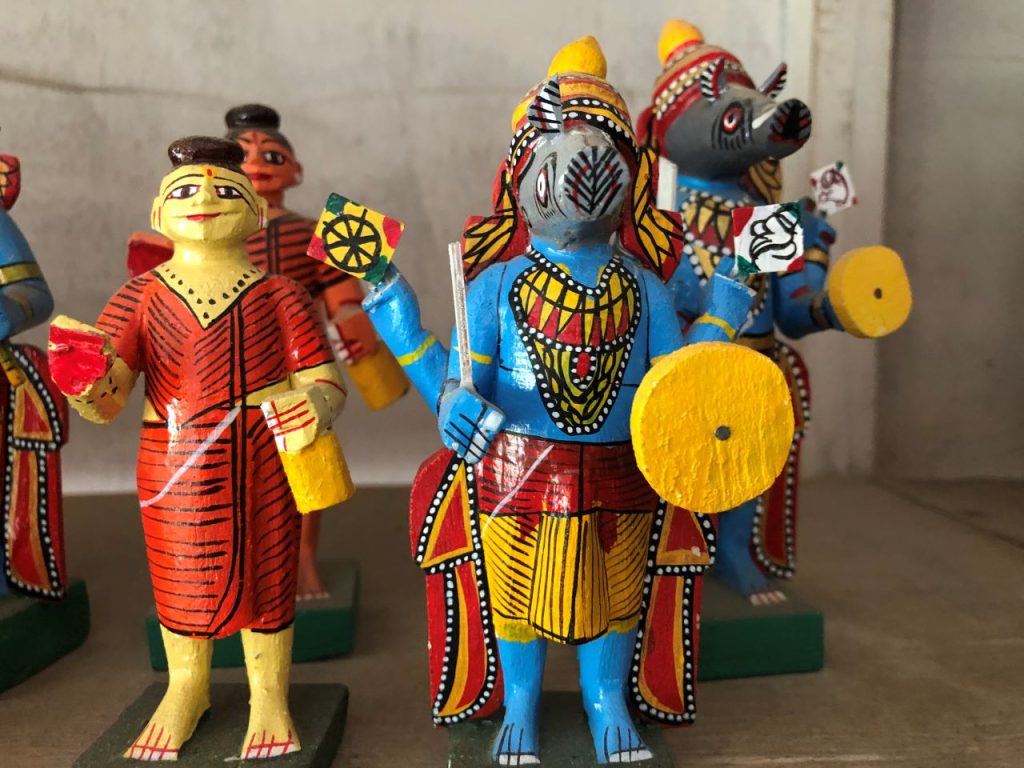
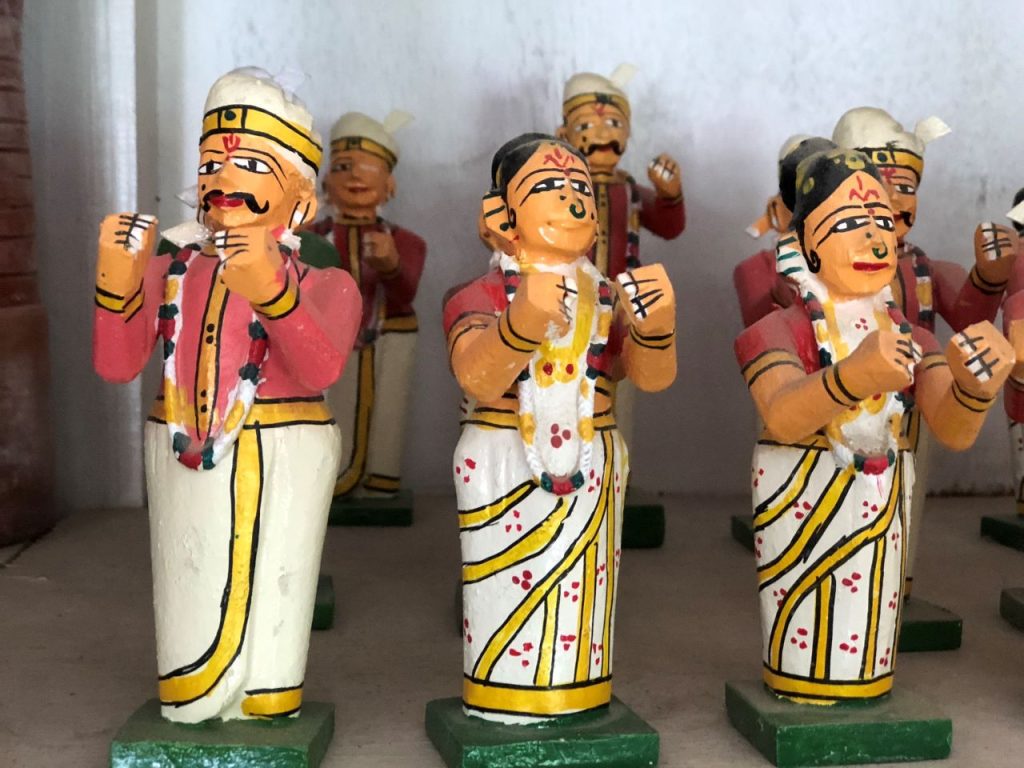
Looking around, I saw an array of Bommala Kondapalli toys as they are called here, painted in vivid shades of vegetable dyes or vibrant enamel hues. Tinted in hues of bright red and yellows, blues and greens, the artisans explained that they now mix oil and water paints as well to bring out the eye-popping colours. However, I was fascinated by the miniature toys themselves.
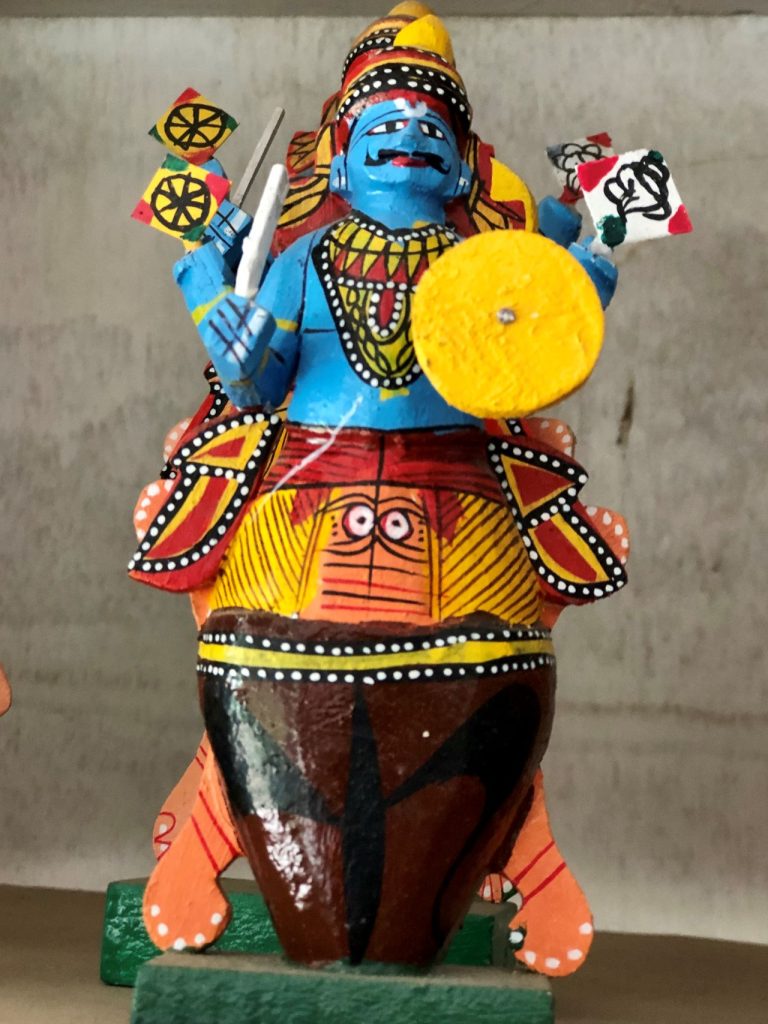

The artisans elaborated on the process. Every part of the toy is chiseled separately from the soft and malleable wood and is then joined together. The craftsmen added that they make a paste, where sawdust is blended with coarse powder made with tamarind seeds which are later applied as glue to stick the parts of the toys together.
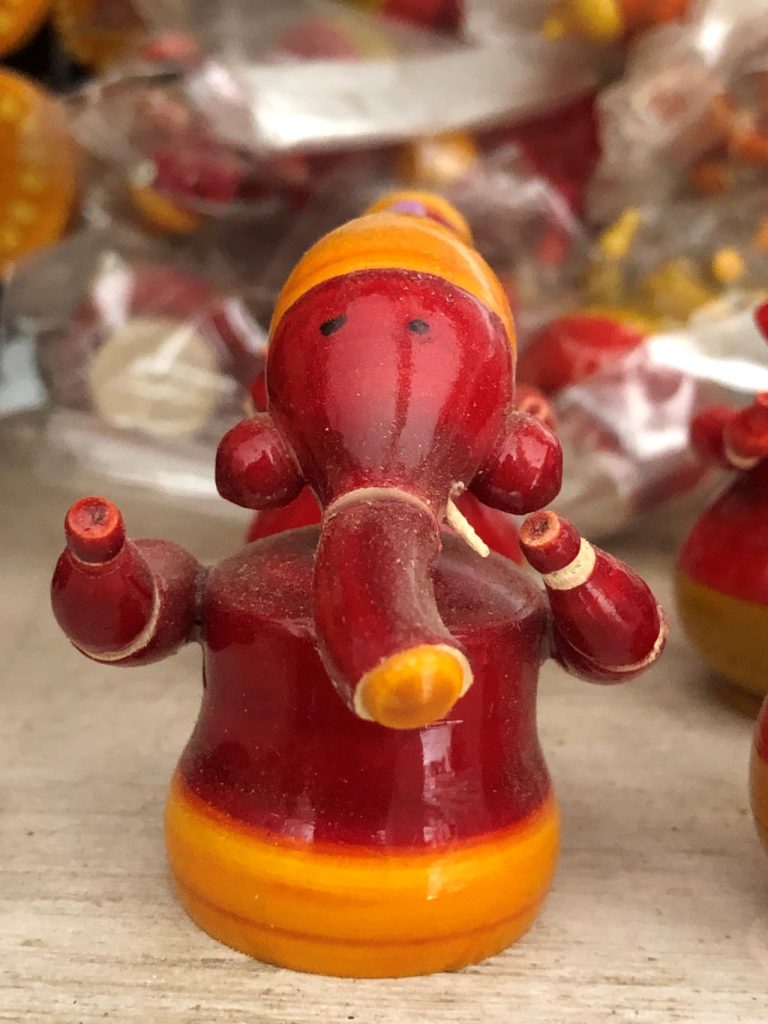
Scenes from mythology were carved in wood. Rama and Krishna were their favourite deities. I could also see tiny representations of Dasavatharam or the ten avatars of Lord Vishnu. I was fascinated by the details as vignettes of life from rural life played out in front of me. There was a farmer with a bright red turban sitting on his bullock cart.
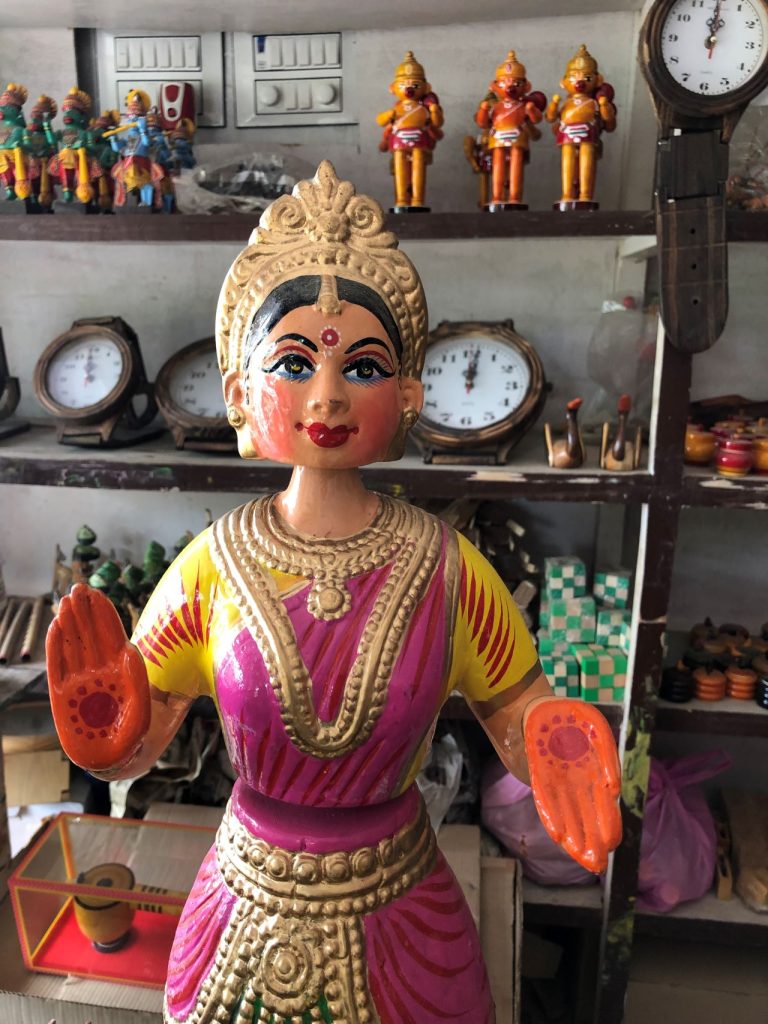
Elsewhere a marriage procession was going on as the bride and bridegroom were carried by the palanquin-bearers Musicians performed, birds sang, soldiers paraded on elephant back, a toddy tapper climbed the tree, a snake charmer posed with his pungi while a wooden cobra lay curled quietly in a basket. The artisans paid homage to fellow craftsmen and women by carving them in wood as well. The dancing girls with golden crowns on their heads shook their heads and swayed their hips gently as they were sculpted out of paper mache. Every toy had such an endearing appeal that I felt like a child in a candy store.
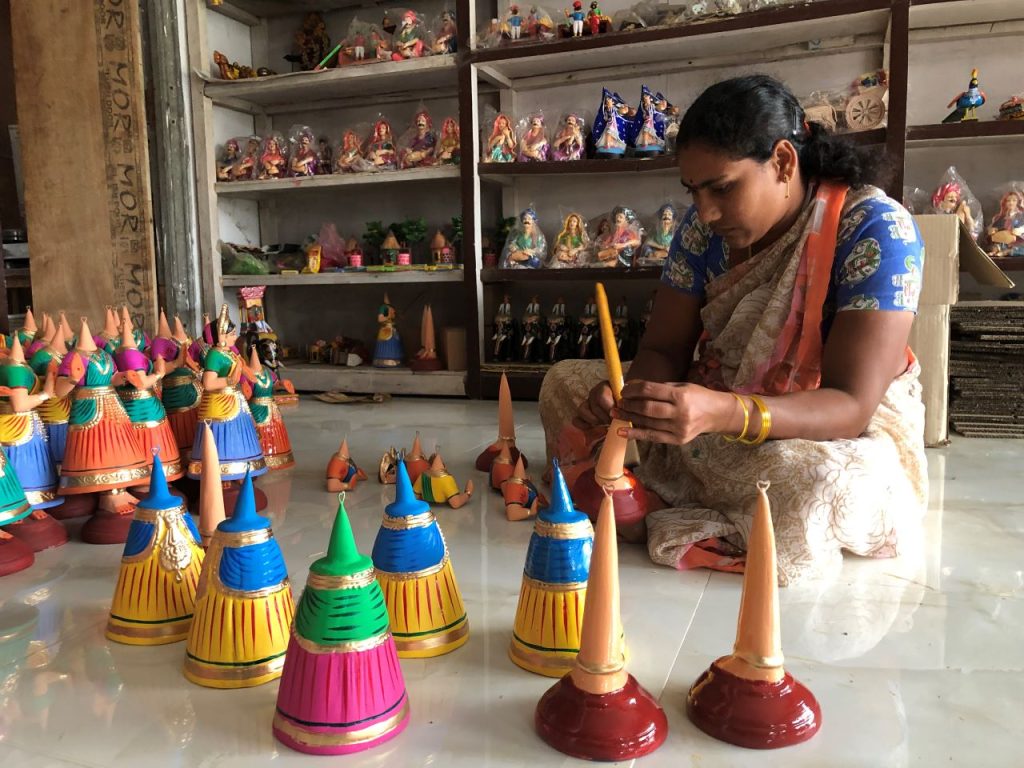
While the traditional toys of Kondapalli are now registered as one of the GI (geographical indication) handicrafts from Andhra Pradesh, Kondapalli is not just another toy town. It has another historic destination with a formidable presence. Rising from the densely forested hills is an imposing fortress and palace. Shrouded in an aura of mystery and fantasy, the majestic ruins gave our fairy tale vibes.
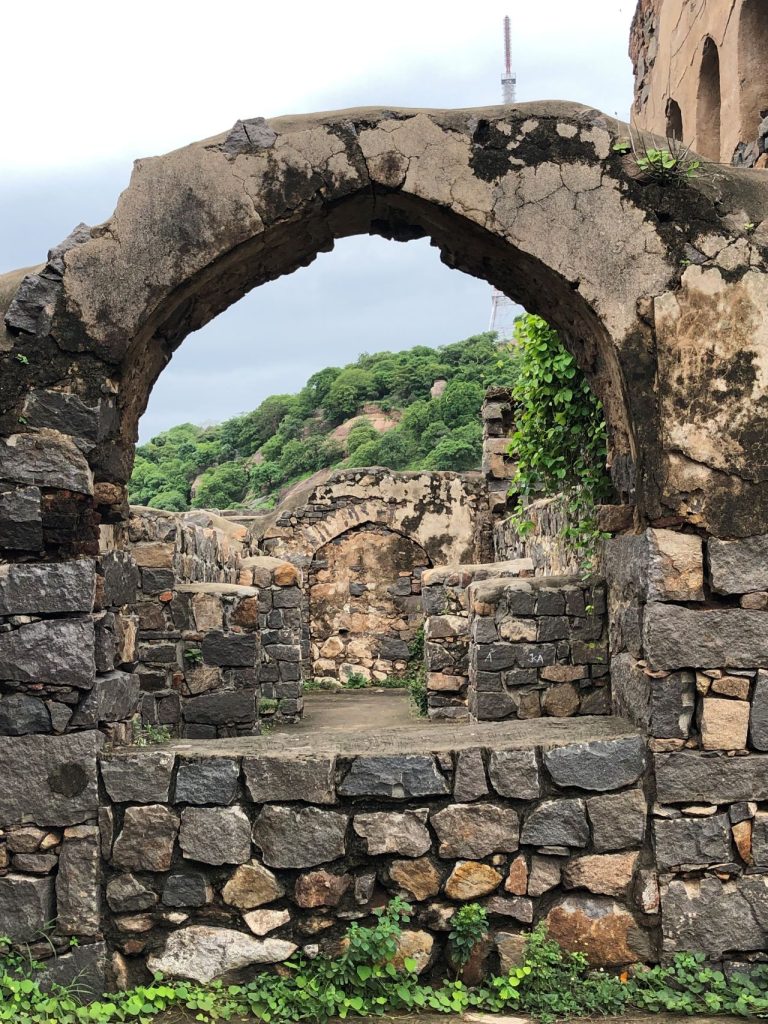
We entered the formidable fort through the main gate that towered at 15 feet high and 12 feet wide and was carved with one single block of granite. Built-in the 14th century by the Reddy kings, the medieval castle was the home of several dynasties including the Nawabs and eventually the colonial powers.

Scattered around the fort were crumbling ruins of towers, palaces, barracks and granaries. Water tanks and reservoirs added to the charm of the ruins. A museum chronicled the history of the village while showcasing a medley of sculptures from the era. The fort may be the last vestige of the glory of the medieval rulers but the ruins narrated a story of battles fought, lost and won. Standing there and losing myself in the endless labyrinth of arches and columns, paths and alleys, I felt like I was in a wonderland, ripped from the pages of an ancient historic tale lost in the annals of time.
This article was published in Deccan Herald recently.

